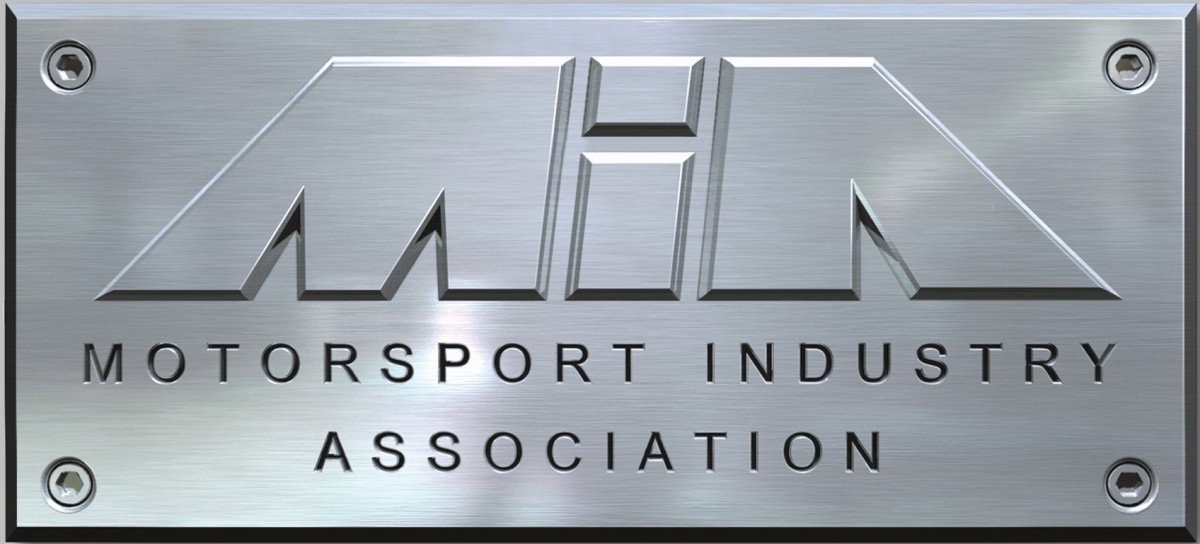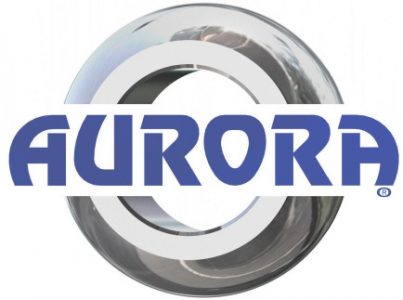Chris Ellis: Beyond Tesla – ‘hydrogen batteries’
Almost 20 years ago, Dr Geoffrey Ballard said in a speech in Camden, Maine:- “Perhaps not the first generation of fuel cell vehicles, but certainly the second or third generation of vehicles will be regenerative fuel cell vehicles and have vehicle-to-grid capability.” At last, this is becoming a reality. Honda recently explained that its next generation of fuel cell car will feature a plug-in function, allowing it to be recharged at home as well as provide backup power. Due next year, the as yet unnamed FCHEV will be based on the current CR-V ‘self-charging’ SUV, shown below.
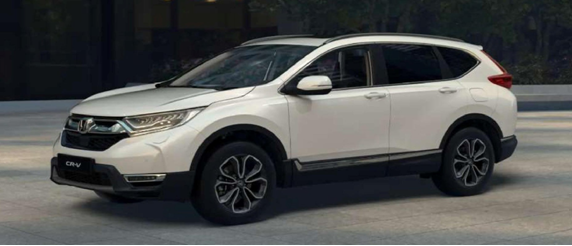
To be clear, the 2024 car will only recharge the relatively small battery, not refill the car’s hydrogen tank. The next step, which Honda and others are already working on for space applications, will be the introduction of reversible fuel cells. Electricity fed into them will initially recharge the battery and then refill the host vehicle with hydrogen by electrolysing the water collected when the fuel cell system was powering the car’s motors. The diagram below shows the key powertrain features of what might be a 2026 Toyota Mirai or Hyundai NEXO. Or Honda Extra-Clarity?
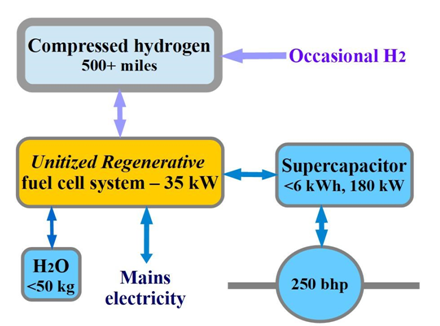
A car with a unitized regenerative fuel cell system (URFC) will be even easier to use than a battery-only EV because it will be much quicker to refuel, rather than recharge, on a long trip, and still just as convenient to re-energise at home. It will also make financial sense to have enough onboard energy capacity to take full advantage of the increasing availability of low-priced off-peak electricity. Simply put, a big hydrogen tank will cost (and weigh) much less than a big battery, and a unitized stack will cost not much more than a single-function stack. Now imagine hydrogen tanks that don’t lose capacity as they get older, and last the life of the vehicle. Oh, they already exist…
So ‘hydrogen batteries’ may have replaced conventional batteries in most new large cars by 2030. Today’s hydrogen vehicles essentially ‘burn’ hydrogen in fuel cells to produce electricity and emit water vapour. A car fitted with a URFC will allow its drivers to minimise their visits to filling stations and radically reduce running costs because it could be refilled with hydrogen using cheap overnight electricity, which will make it much less expensive to run than a conventional car. And it will retain the ability to be refilled in less than five minutes with compressed hydrogen at a filling station during an occasional very long trip.
A ‘simple’ fuel cell stack produces electricity more efficiently than any currently available unitized system, so most manufacturers may prefer to offer a small electrolyser as an optional extra, rather than load all their cars with the cost, weight and relative inefficiency of unitization. We shall see…
Way beyond Tesla – the ultimate hypercar
Now imagine it’s 2027, and Jaguar has just announced the H-Type, to global acclaim. TopGear declares – “The E-type is no longer the most beautiful car in the world!” However, the H-Type is more closely related in appearance to the XJ13, shown below. Sadly, only one genuine XJ13 still exists. It was Malcolm Sayer’s greatest masterpiece, the mid-engined successor to his beautiful front-engined D-Type Le Mans cars. So car designers have struggled ever since to avoid their supercars looking like an XJ13! And Jaguar still owns ‘beautiful’ when applied to cars – see the Telegraph’s recent ‘Most beautiful cars’ poll, with the E-Type toping the list.
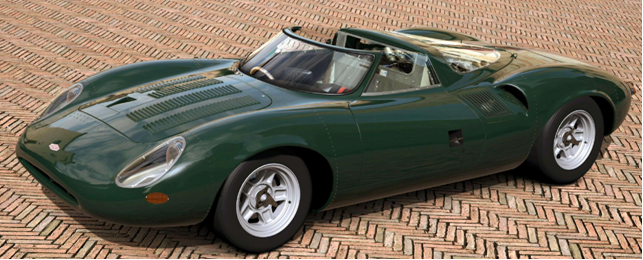
However, it seems that any idea of a road car based on the XJ13 is permanently up on bricks. Jaguar is now focussing on luxury electric cars, starting with a 4-door ‘GT’ in 2025, according to:-
https://www.jaguarlandrover.com/news/2023/04/jlr-invest-ps15-billion-over-next-five-years-its-modern-luxury-electric-first-future
Although the XJ13 was obviously designed as a racing car (note the narrow cockpit, the exposed rivets, etc.), it could have formed the basis of a stunning mid-engined ‘halo’ road car decades before Porsche got around to the Boxster. Jaguar’s merger with BMC seems to be why this didn’t happen.
But Aston Martin now has the right mindset and resources to be able to take the lead and develop the ultimate hypercar, courtesy of its new executive chairman, Lawrence Stroll. I hope he will like the following suggestions. The Volante version of the current DB11 is shown below; it’s the starting point for the DBH concept.
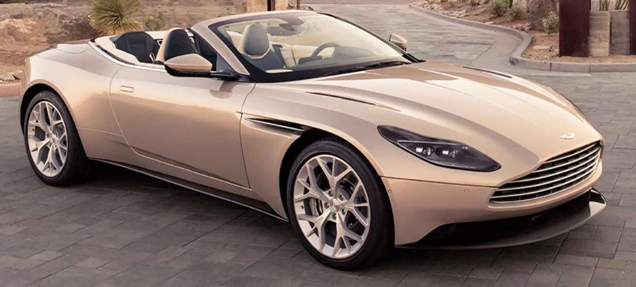
In the DBH concept, the absence of a big V8 allows the driver and front passenger to be a few inches further forward, which will provide the rear passengers with real legroom, unlike the DB11, so it will be a full 4-seater, not just a 2+2. It will continue to have the ‘pure beauty’ of the DB11 and E-Type, but with a similar profile to most mid-engined hypercars, including the Valhalla, below.
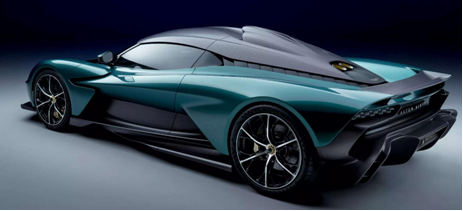
The DBH will not need all the vents and winglets of the Valhalla, so below is a view, from a similar angle, of a DB12 Volante to give an idea of how a DBH may look with its top down. ‘Pure Beauty’ wins!
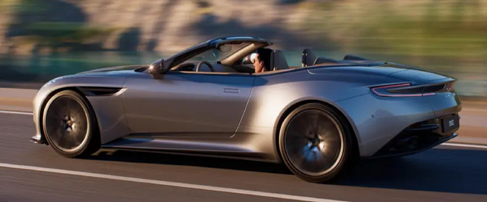
The DBH’s powertrain will be very different from the engine and transmission in the DB12. Four electric motors will provide a total of up to 800 kW, mainly because Aston Martin U.S. will insist on “over one thousand horsepower!” This high level of power in a car weighing under 1,400 kg will come from a supercapacitor system with a capacity of 30 kWh. The fuel cell stack will be capable of providing up to 100 kW continuously. Regeneration will be provided by a separate 7 kW electrolyser. A unitized fuel cell system was considered, but a ‘simple’ fuel cell stack produces electricity more efficiently than any currently available unitized system. And the racing version of the DBH won’t need recharging, only refuelling from a trackside hydrogen truck.
Despite no regeneration, the racing version of the DBH will weigh more than the road version because it will carry a 50 kWh ultracapacitor stack and a 150 kW fuel cell stack. So “over fifteen hundred horse power”, with four ‘Active Air’ fans providing massive downforce at all speeds, to enable all of those horses to be used. So, probably faster than a Formula One car (and a Porsche Mission X?), in the right hands, not just in a straight line but around any circuit where Active Air is allowed. Most governments have yet to decide whether Active Air should be allowed on road cars. But if they do, Jaguar are bound to bring back, on their road cars, the warning triangle on the rear bumper that announced to the world that disc brakes had arrived. The triangle suggested you keep your distance!
‘Ultimate hypercar’ was a strong claim, but I hope you will agree it will be difficult to improve on the DBH’s looks, performance and environmental friendliness. And it should cost less to run than a Mini. Apart from the insurance!
Chris Ellis, Systems Engineer, FBCS












